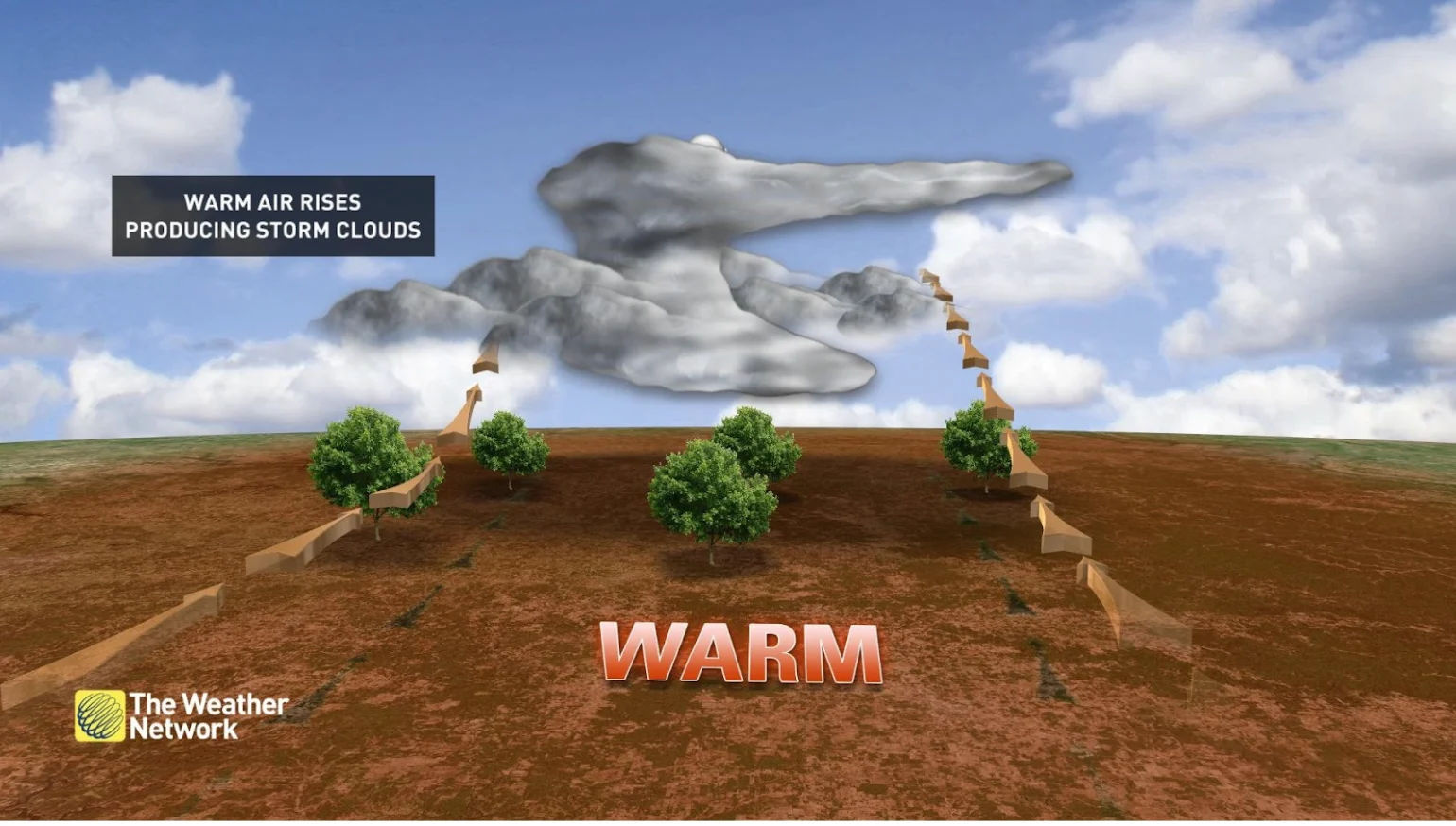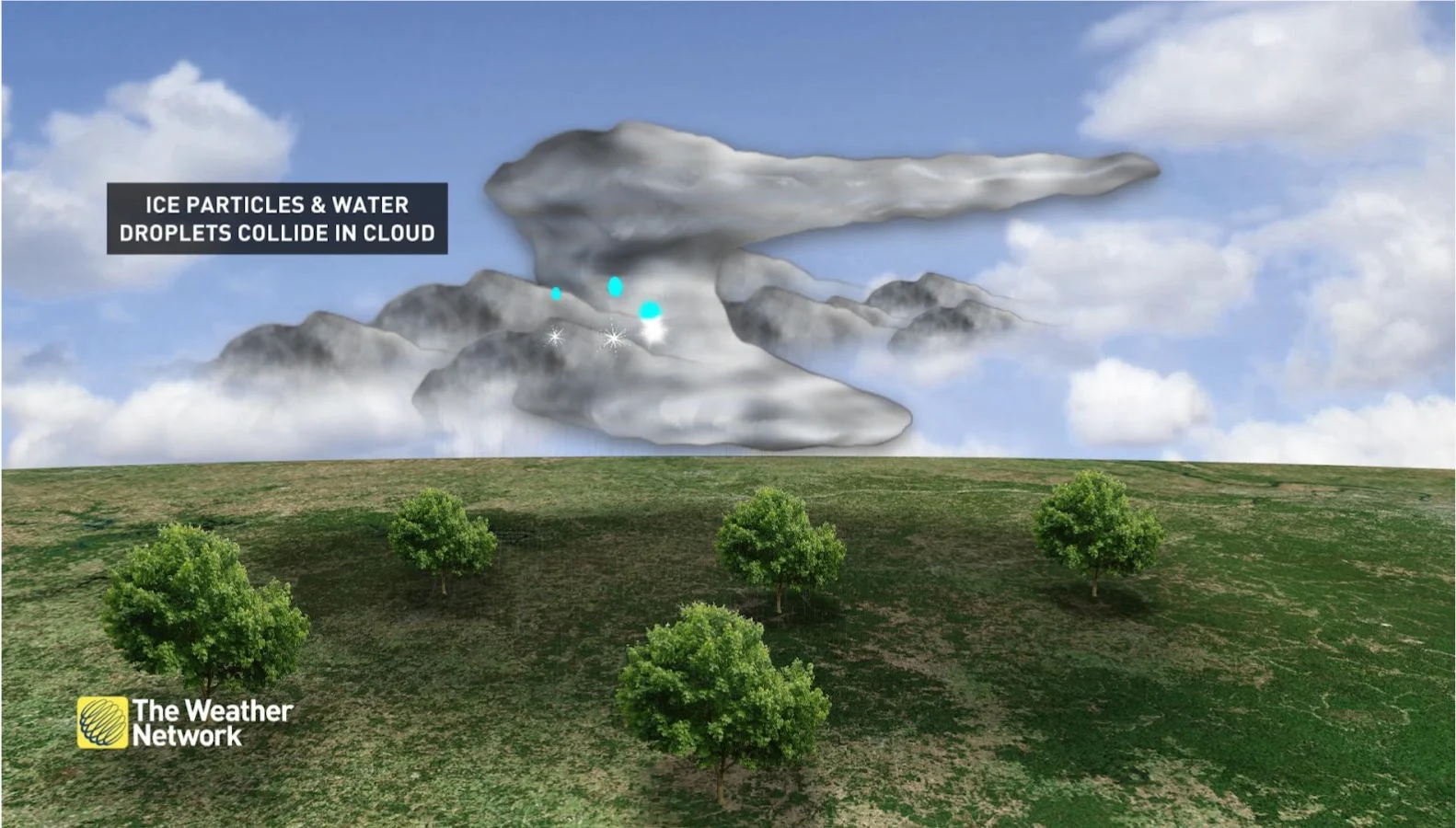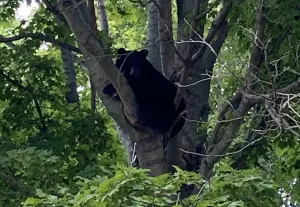
How the pandemic caused less lightning around the world
Worldwide lightning activity plummeted by nearly eight per cent in 2020 due to lockdowns triggered by the COVID-19 pandemic. A drop in atmospheric aerosols may have been the cause.
On average, Canada sees 2.4 million lightning strikes per year, but a new study suggests there was a decrease during the COVID-19 pandemic.
Published in the journal PubMed Central, researchers found that global lightning activity decreased by nearly eight per cent in 2020 due to lockdowns triggered by the pandemic. This was potentially caused by the reduction in atmospheric aerosols.
Atmospheric aerosols, which is also known as particulate matter, is the suspension of liquid droplets or fine solid particles in the air. They can arise from the burning of fossil fuels, forest fires, volcanic eruptions, and sea salt. Some aerosols in the atmosphere can collect water vapor, thus forming into a water droplet.
In a thunderstorm, ice particles and water droplets collide. These collisions cause positive and negative charges within a cumulonimbus cloud. Warm, moist air rises, while cool, dry air sinks. This is the basic principle to the formation of thunderstorms. As the warm air rises within the atmosphere, it cools, thus condensing into a cloud. Once there is ample moisture and humidity with the presence of high temperatures, which results in Convective Available Potential Energy (CAPE), powerful updrafts can form. This results in an increase in thunderstorms, and hence, lightning activity. They then interact with charges on the ground, producing lightning strikes.

SEE ALSO: Giant lightning flash spanning three states sets a new record
Many atmospheric variables can affect weather and climate patterns, especially a notable change with environmental factors. As the world came to a halt back in 2020, human activities were put on pause, which resulted in the reduction of burning of fossil fuels. This study has shown that due to the pandemic there were notable changes in carbon dioxide, air temperature and humidity, which correlated to the decrease in lightning activity.

Lightning can also be triggered by atmospheric aerosols due to transportation and industrial activities. Cloud Condensation Nuclei (CCN), also known as cloud seeds, are used to advance the cloud-making process in order for precipitation to occur through cloud microphysics processes. During the lockdown, many transportation and industrial activities came to a halt. Therefore, according to this study, the reduction of aerosols and CCN within the atmosphere prevented rapid cloud formation, decreasing overall thunderstorm formation and lightning activity.

DON'T MISS: A historic rogue wave off the B.C. coast towered nearly as tall as a jumbo jet
This study was conducted with atmospheric data from Europe and Oceania, incorporating statistical analysis showing the variation trend of lightning strikes count (LSC) was reduced by more than 50 per cent compared to the last five years. This is critical to researchers as it gives them a clearer picture of why lightning strikes decreased during the pandemic.
WATCH BELOW: UNDERSTANDING 'CAPE' AND WHAT IT MEANS FOR THUNDERSTORM DEVELOPMENT
Thumbnail credit: Kyle Brittain/The Weather Network
Melinda Singh can be followed on Twitter.










